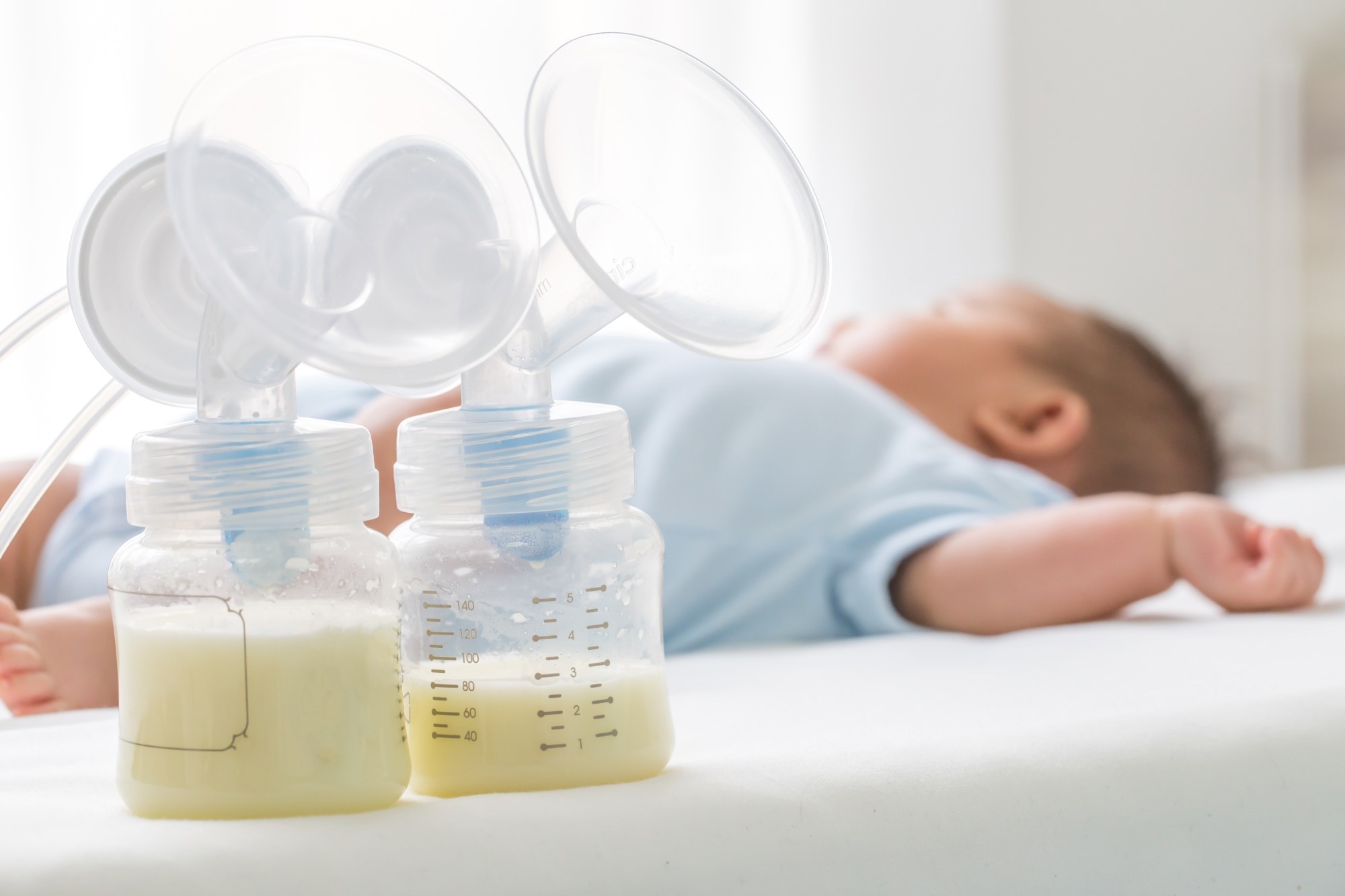Despite common beliefs, new research shows that how often and how long mothers breastfeed has almost no impact on milk microbiome diversity.

Study: The human milk microbiome is minimally associated with breastfeeding practices. Image credit: comzeal images/Shutterstock.com
A recent paper in the journal Scientific Reports explored associations between human milk bacteria and breastfeeding attributes.
Introduction
Breast milk is the infant’s source of nutrition, but it is also key to establishing a healthy infant gut microbiome. The bacteria in breast milk prevent gut colonization by pathogens and promote the growth of beneficial microbes.
Most health organizations recommend that infants be exclusively breastfed during the first six months. Human milk contains microbes typically found in the mouth or skin, such as Staphylococcus, Streptococcus, Acinetobacter, and Cutibacterium. These are probably from the mother’s skin and the infant’s mouth.
Lactating mothers' daily duration and frequency of breastfeeding and the volume of milk production vary widely. Could this affect the bacterial composition of human milk?
Study findings
The study was based on breast milk samples from mothers enrolled in the Breastfeeding Longitudinal Observational Study of Mothers and Kids (BLOSOM) birth cohort.
When the milk was collected, most mothers were nursing their babies three months after childbirth, and importantly, milk samples were collected from only one breast per participant rather than both.
The study sample consisted mainly of Caucasian women who had given birth to more than one child, which may affect how widely the findings can be applied to other populations.
The samples contained hundreds of bacterial genera with over 30,000 operational taxonomic units (OTUs). Taxa that comprised 0.5% or more of the total were identified, comprising almost 90% of the bacterial sequences in the samples.
The microbes in the milk samples were typical of skin and oral cavity species. Dominant species included Streptococcus mitis, Streptococcus salivarius, and Cutibacterium acnes. These made up 15.6%, 13%, and 12% of the sample, though the numbers varied across individuals.
The 24-hour breastfeeding duration was weakly correlated with the proportion of S. salivarius in the sample but not the proportion of other taxa. S. salivarius found in the mouths of healthy infants could be associated with breastfeeding duration because, as the infant sucks, some backflow is likely to occur into the breast ducts, accounting for this finding. No other species was found to be associated with the human milk microbiome characteristics.
The microbiome structure remained unchanged across samples, suggesting that the microbial profile of human milk is influenced by factors other than breastfeeding duration, frequency, or total milk volume.
Some scientists think bacteria are exchanged between the baby’s mouth and the breast glands. A Guatemalan study supported this suggestion, with higher levels of multiple Streptococcus and other species colonizing the oral cavity in milk samples from exclusively breastfeeding mothers compared to those who used supplementary feeds.
Interestingly, such species are found in pre-colostrum even before breastfeeding begins. Possibly, these bacteria colonize the breast, increasing in abundance after the onset of breastfeeding.
More frequent breastfeeding naturally led to greater total time at the breast each day. This finding suggests that the overall duration of breast exposure to the infant’s oral bacteria, rather than just the number of feeds, may be more relevant to the milk’s microbiome.
Unexpectedly, breastfeeding duration was not associated with any change in the microbiome. This could be due to the use of relative abundance rather than the actual numbers. With repeated exposures, certain bacteria may become so numerous that they obscure associations with species at lower relative abundances.
A higher 24-hour duration did not correlate with the volume of milk removed.
Methods like quantitative polymerase chain reaction (qPCR) may help explore these areas more usefully. Future studies should include a more diverse sample with different ethnic backgrounds and a wider socioeconomic distribution. Samples should be collected beyond three months postpartum.
Other factors that could alter the breastmilk microbiome include handwashing practices, milk expression by hand or pump, cleaning of the breast pump, and feeding by women other than the mother.
Conclusion
Only one breastmilk microbial parameter was marginally altered by differences in breastfeeding practice. This suggests that “variance in breastfeeding practices largely does not alter the milk microbiome.”
However, the findings may not be generalizable to all populations, and future research will be needed in more diverse groups and using both breasts for sampling.
Download your PDF copy now!